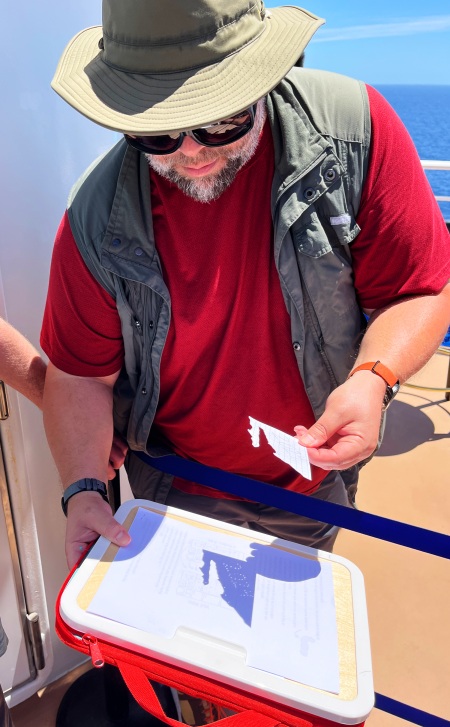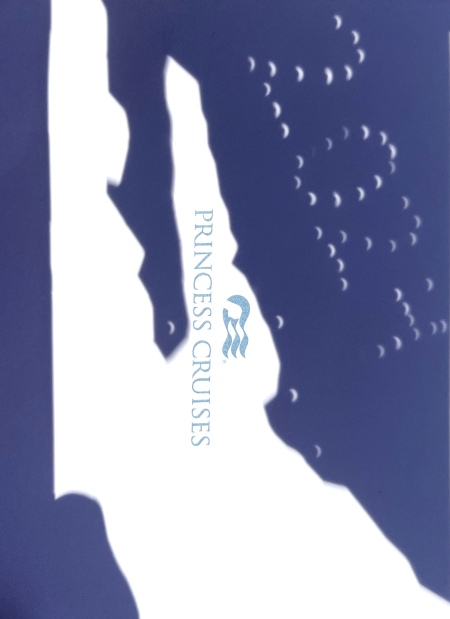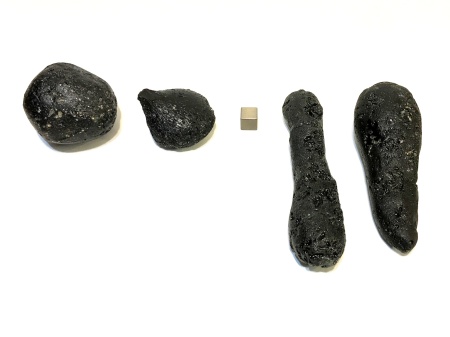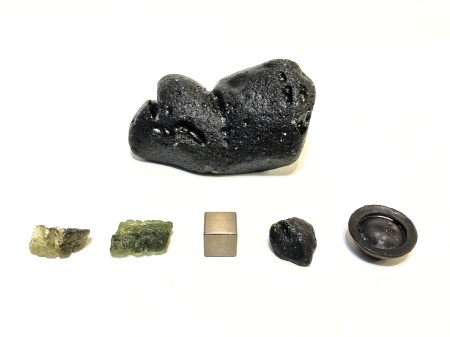I was fortunate to get to be a speaker on the Discovery Princess on an eclipse cruise to the Mexican Riviera. I’m posting some photos here not only as a quick-and-dirty observing report, but also to make them available to my fellow travelers. Folks: download, post, and print at will!
During the eclipse on April 8 I did some pinhole projection.
I used a paper template that showed the west coast of Mexico, including our ports of call: Cabo San Lucas, Mazatlan, Manzanillo, and Puerto Vallarta.
Possibly my favorite effect during a total solar eclipse is the 360 sunset. Here’s my view looking forward on the starboard side, just after the start of totality.
After totality, I enjoyed on of the ‘Eclipse’ drinks that the bars on board were serving.
Photos of my piece of the Sikhote-Alin meteorite — the one I was carrying around the ship and inviting people to hold for themselves — are in this post (link). And the meteorite now has its own profiles on Facebook (link) and Instagram (link). Come say hi!
Photos of many of the other meteorites and impactites from my “Space Rocks: Meteorites and Tektites” talk are available in previous blog posts, under the ‘My Meteorites’ category (link). Here are a few that aren’t:
Here’s my personal collection of indochinite tektites, showing a range of different shapes.
The same photo without labels.
Other tektites and impactites from my collection.
And that photo without labels.
My cast of a little australite “button” tektite. Like many of the objects in my collection, both the tektite cast and the 1cm cube came from meteorite vendor Gary Fujihara, “Big Kahuna” on eBay (username fujmon). I’ve bought a lot of stuff from Gary over the years, and I’ve had only great experiences.
To my fellow travelers: many thanks for making my cruise so enjoyable! I hope to see you again in the future.





































